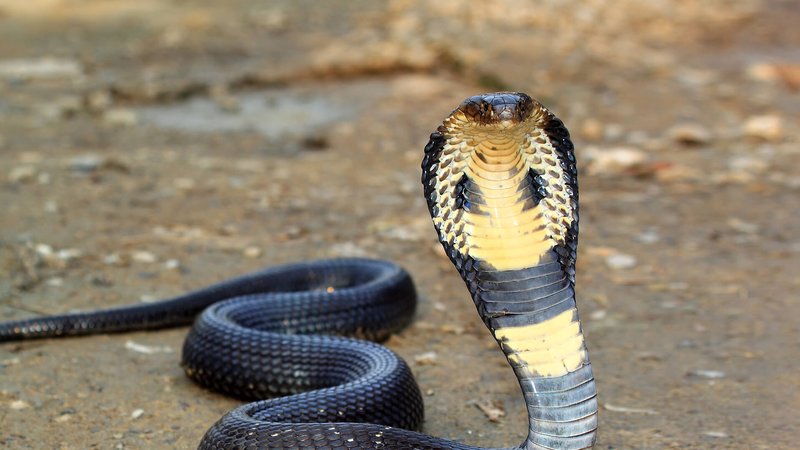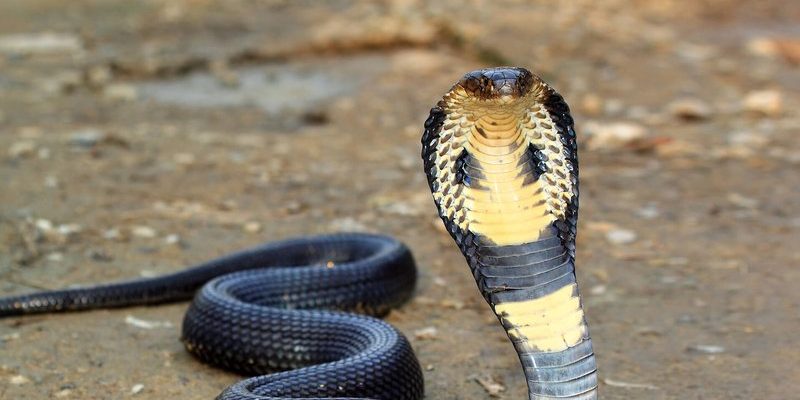
You might be wondering how such a formidable predator manages to tackle these harsh environments. Let me explain. The king cobra is not just a fierce serpent; it’s also an expert at utilizing its surroundings to ensure survival. From its specialized diet to its remarkable physical adaptations, everything about its lifestyle is designed for resilience. And trust me, this isn’t just a story of survival; it’s about the incredible ways this remarkable snake has embraced its challenges.
Adaptations to Temperature Extremes
One of the biggest challenges for the king cobra is managing its body temperature. Like all reptiles, it’s ectothermic, meaning it relies on external heat sources to regulate its body temperature. This can be tricky in the wild, especially in regions where the sun blazes down during the day, but the nights can be surprisingly cool.
During the hotter months, you might find king cobras hiding under the shade of trees or slinking into burrows to avoid overheating. They often become more active in the early morning or late evening when temperatures are cooler, which helps them stay nimble and alert. It’s like adjusting your schedule to enjoy a sunny park visit early in the morning rather than sweltering under the midday sun.
On the flip side, when temperatures drop, these snakes have been known to bask in the sun, just like we might spread out a blanket on a sunny day. They need to find a balance to thrive, showcasing their ability to adapt their behavior based on the weather.
Hunting Strategies for Survival
The king cobra is a snake that takes its hunting seriously. Its diet primarily consists of other snakes, including venomous ones, which is pretty impressive! But how does it manage to hunt in such varied environments?
This snake relies on stealth and quick strikes. When hunting, the king cobra often uses camouflage to blend into its surroundings. Imagine wearing earth-toned clothes to blend in with the forest. By doing this, it can ambush unsuspecting prey without giving itself away. Moreover, its keen sense of smell, aided by its forked tongue, allows it to detect prey from a distance.
When it finally catches its target, it delivers a potent venom that can subdue even the most dangerous of snakes. The venom acts quickly, making the hunt efficient, allowing the king cobra to thrive in challenging environments where food might be scarce.
Water Adaptation and Survival
You might be surprised to know that king cobras are excellent swimmers! They often venture into water, not just to cool off but also to hunt for food. These snakes are surprisingly agile in the water, using their powerful muscles to propel themselves with grace. Think of them as the “Olympic swimmers” of the snake world.
In areas where water sources are limited, they’re known to travel significant distances to find a suitable habitat. Their ability to adapt to both land and aquatic environments is a testament to their survival skills. When the heat becomes unbearable, they can simply slip into a creek or pond.
Additionally, they also make use of rivers or streams for hunting. Sneaking up on their prey from beneath the surface, they capitalize on the element of surprise. It’s a clever survival strategy that highlights their adaptability and ingenuity.
Social Behavior and Territory
While king cobras are primarily solitary creatures, understanding their social behavior offers insight into their survival. During the breeding season, males compete for females, often engaging in mating displays that showcase their strength and agility. This is more than just a flamboyant dance; it’s about ensuring the best genes pass on to future generations.
In their territory, king cobras are known to establish a sense of dominance. They can be territorial and will defend their space from intruders. It’s like having a well-defined personal space that they fiercely protect. This helps ensure they don’t compete with other snakes for food resources.
By establishing territories, they can efficiently use the resources available to them, reducing stress and increasing their chances of survival. It’s a balancing act that can lead to success in the wild.
The Role of Habitat in Survival
The king cobra is often found in diverse habitats, from dense forests to open grasslands and even wetlands. Each of these environments presents unique challenges, but they also offer the resources needed for survival.
In tropical forests, the lush vegetation provides plenty of hiding spots and a variety of prey. This dense cover helps them avoid larger predators, while also ensuring they have easy access to food. On the other hand, in grasslands or scrublands, they can use open spaces to spot prey from a distance, making it easier to plan their ambush.
Adapting to various habitats is crucial. For instance, during the dry season, the king cobra might migrate to areas with more abundant water sources, showcasing its ability to read its environment. This flexibility in habitat choice is key to its survival and ability to thrive in harsh conditions.
The Impact of Climate Change on King Cobra Survival
As the climate shifts, countless species face new challenges, and the king cobra is no exception. Changes in temperature and weather patterns can significantly impact its habitat and the availability of prey.
For instance, rising temperatures may alter the distribution of the king cobra’s food sources, forcing them to travel further to hunt. Additionally, extreme weather events, like heavy rains and flooding, can disrupt their habitats and nesting sites. It’s like being thrown into a game of musical chairs where the stakes are much higher.
Conservation efforts are crucial to ensure that the king cobra continues to thrive despite these changes. Protecting its habitat and understanding its ecological role can help mitigate some of the challenges it faces. This awareness ensures that future generations can marvel at this incredible creature.
Surviving in harsh environments is no easy feat, but the king cobra has mastered the art of resilience. Through clever adaptations, efficient hunting strategies, and a strong understanding of its habitat, this snake showcases the wonders of nature’s creativity. Each aspect of its lifestyle reflects its ability to navigate challenges and make the most of what it has.
The king cobra is a reminder that survival often requires flexibility and resourcefulness. By respecting its environment and understanding its role, we can help ensure that this majestic creature continues to thrive for years to come. After all, in the grand tapestry of nature, every thread counts.

